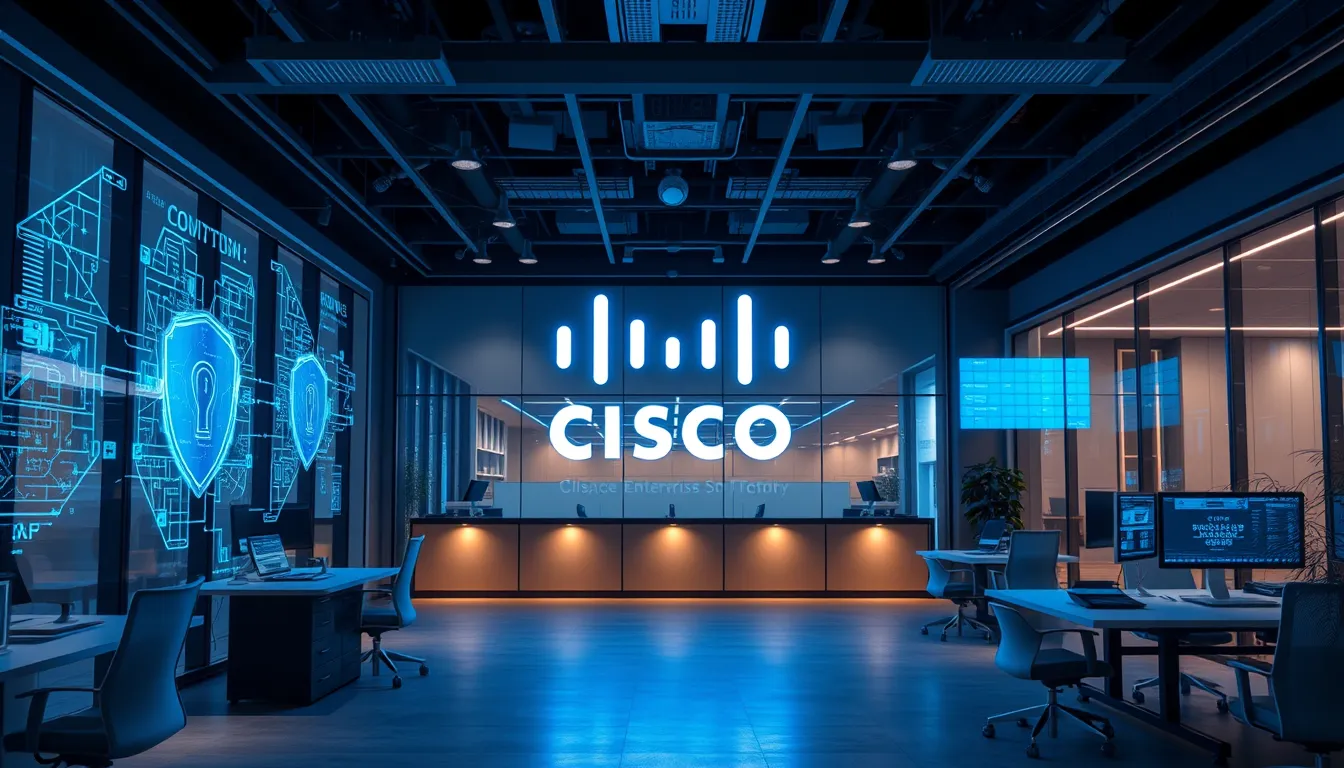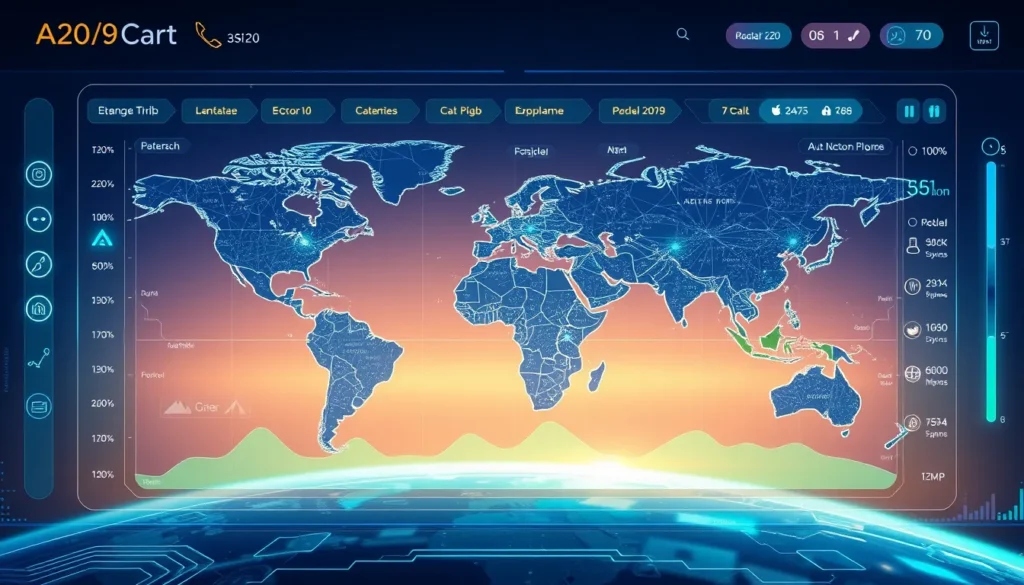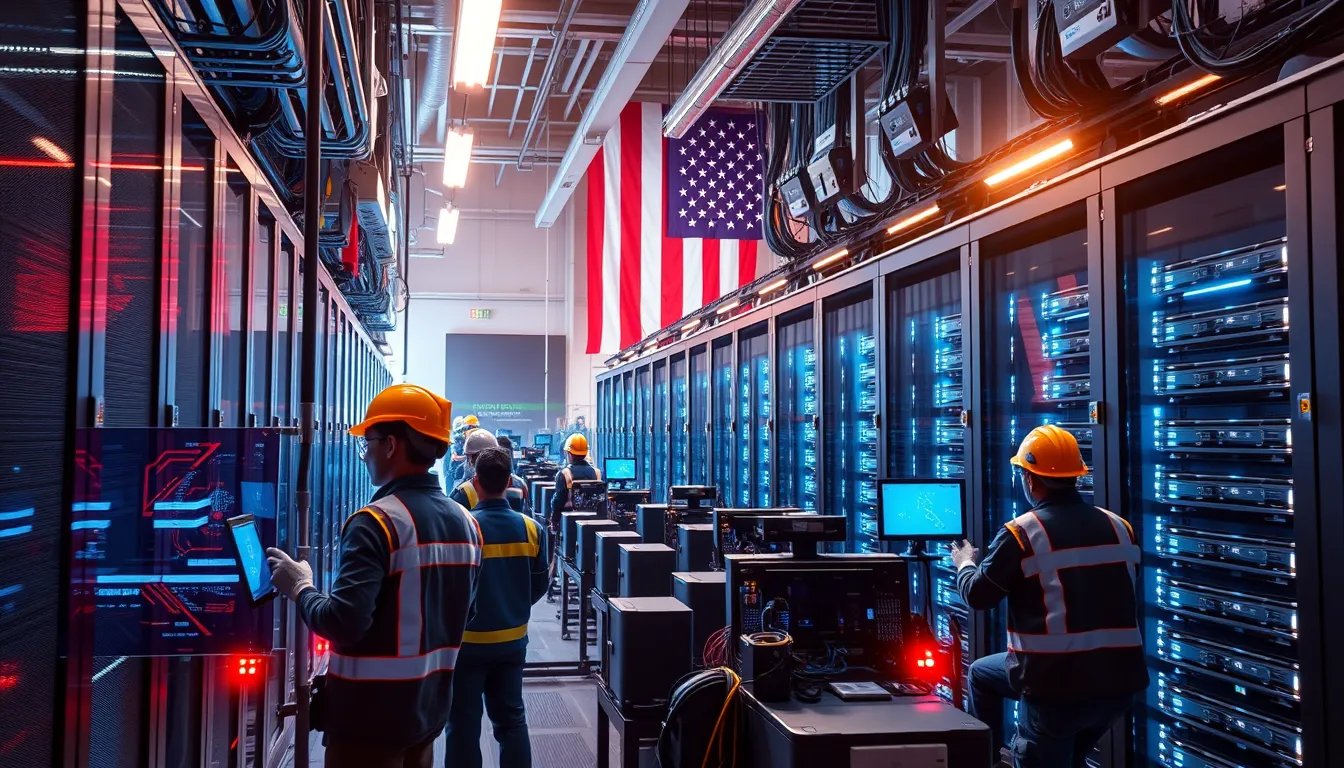Now Reading: Cisco AI Security: Revolutionizing Enterprise Protection
-
01
Cisco AI Security: Revolutionizing Enterprise Protection
Cisco AI Security: Revolutionizing Enterprise Protection

Cisco AI Security: Revolutionizing Enterprise Protection
Introduction
Cisco, in collaboration with IDC, is pioneering innovative AI security solutions tailored for modern enterprises. Leveraging advanced machine learning techniques and the deep expertise of Cisco Talos, the journey toward robust Cisco AI security is well underway. This integrated approach not only embraces the cutting-edge technology of AI-driven defense systems but also establishes a strong foundation for enterprise protection in an ever-evolving threat landscape.
As digital transformation accelerates, organizations face increasingly sophisticated cyber threats. Traditional security measures often fall short in detecting and mitigating AI-targeted attacks. Cisco’s forward-thinking strategy incorporates self-optimizing machine learning models that learn over time, enabling organizations to predict, detect, and counteract potential breaches. By continuously evolving its methodologies, Cisco AI security aims to create a resilient infrastructure, capable of adapting to and neutralizing emerging risks.
Cisco’s AI Defense System and Enterprise Collaboration
Cisco’s unwavering commitment to reinforcing enterprise security is clearly reflected in its state-of-the-art AI Defense system. This system employs self-optimizing machine learning algorithms designed to monitor complex, multi-model environments while continuously validating and updating security models. The architecture underlying these models is built to identify anomalies, rapidly assess potential threats, and adapt defenses in real time.
Organizations benefit significantly from this proactive approach. By integrating anomaly detection algorithms with deep learning techniques, the Cisco AI security framework is capable of recognizing subtle changes in network behavior that might indicate a breach. This methodology not only enhances the detection rate but also minimizes false positives, ensuring that security teams can focus on genuine risks. Furthermore, the AI Defense system’s multi-layered approach provides redundancy across various security checkpoints, thereby improving overall system resilience.
The Role of Cisco Talos and IDC Collaboration
A significant cornerstone of Cisco’s security strategy is the powerful synergy between Cisco Talos and IDC. Cisco Talos, known for its deep threat intelligence and real-time monitoring, collaborates seamlessly with IDC’s industry insights and market analysis to bolster Cisco AI security. This partnership allows enterprises to leverage a vast repository of threat data, including emerging vulnerabilities and attack vectors.
The combined expertise of Cisco Talos and IDC enhances the effectiveness of the AI Defense system by merging real-world data with advanced predictive analytics. For instance, shared intelligence regarding novel malware behaviors or unexpected system exploits enables the rapid updating of defense protocols. This proactive stance ensures that enterprises have access to timely, actionable information, keeping them one step ahead of potential cyber adversaries. The comprehensive and integrated nature of this collaboration provides a holistic approach to modern enterprise security, ensuring that both current and future challenges are addressed.
Addressing Modern AI Threats
Modern enterprises must contend with an array of challenges that test the limits of their security infrastructure. In today’s digital environment, new techniques such as prompt injection and AI training data poisoning present unique hazards that require dedicated attention.
Addressing Prompt Injection in AI Systems
Prompt injection represents a significant threat in the realm of AI systems. This form of attack exploits vulnerabilities in the way AI models process and respond to inputs. When an attacker manipulates the prompts or commands provided to an AI system, the security and reliability of the model can be compromised, leading to unintended behaviors or system breaches.
To counteract prompt injection, Cisco AI security employs a multi-faceted defense strategy. First, there is an emphasis on rigorous input validation that filters and sanitizes data before it is processed by AI algorithms. Complementary to this, adaptive machine learning models are continuously refined based on detected threat patterns. This dynamic updating process ensures that vulnerabilities are addressed promptly, reinforcing the resilience of the overall security framework. Curriculum learning and adversarial training techniques are also incorporated, enabling systems to recognize and neutralize malicious inputs before they evolve into more significant issues.
Defending Against AI Training Data Poisoning
Equally critical is the defense against AI training data poisoning, a risk that can have far-reaching implications if left unmitigated. Data poisoning involves the deliberate insertion of misleading or corrupt data into the training sets of AI systems. When such corrupted data is integrated into the learning process, it can drastically skew the performance and decision-making capabilities of the AI model.
Cisco tackles the challenge of data poisoning by implementing continuous monitoring and robust validation protocols throughout the model training lifecycle. This approach includes anomaly detection algorithms that scrutinize incoming data streams for inconsistencies and cross-referencing with trusted data sources. In addition to these safeguards, Cisco’s infrastructure supports real-time feedback loops, allowing learning models to adapt quickly to any discrepancies encountered during operation. Constant vigilance and iterative updates are key aspects of maintaining integrity within the AI models, ensuring that any attempt at data poisoning is identified and neutralized before it compromises the system’s performance.
Evolving AI Defenses in Enterprises
As cyber threats continue to evolve, so too must the methods used to thwart them. The evolving landscape of AI security demands that enterprises periodically revisit and refine their defensive measures. Adopting agile security practices is essential, as it allows organizations to adapt their Cisco AI security frameworks in response to new vulnerabilities and threat vectors.
One crucial aspect of evolving AI defenses is the commitment to continuous learning. With each new threat detected, the AI models undergo a cycle of retraining and optimization that enhances their ability to respond more effectively in the future. This cycle of continuous improvement is not only a hallmark of Cisco’s strategy but also a critical requirement in today’s fast-paced digital world, where threats can materialize unexpectedly.
Furthermore, enterprises are encouraged to integrate cross-functional security measures that combine traditional cybersecurity techniques with advanced AI-driven approaches. For example, integrating behavioral analytics with conventional network security protocols can provide a layered defense strategy that mitigates risks from multiple angles. Cisco’s AI security framework is designed with this versatility in mind, supporting integration with a wide range of existing security solutions and offering scalability to address enterprise-level demands.
The Importance of Adaptive Security Infrastructure
Adaptive security is a cornerstone of Cisco’s approach, emphasizing the need for systems that not only respond to but anticipate threats. By leveraging advanced modeling techniques, including reinforcement learning, Cisco AI security systems are capable of simulating various attack scenarios and preemptively optimizing their defensive postures. This proactive form of threat management ensures that organizations are not constantly playing catch-up with cybercriminals but are instead several steps ahead.
An adaptive security infrastructure also fosters greater resilience through redundancy. Multiple security checkpoints, diverse data validation protocols, and constant system audits contribute to maintaining high levels of security readiness. This layered defense model, which includes real-time monitoring and predictive analytics, has proven effective in mitigating both known and emergent threats, fortifying enterprises against a wide spectrum of cyber risks.
Integration with Broader IT Ecosystems
Cisco AI security is not an isolated solution but rather an integral component of a broader IT ecosystem. As organizations increasingly rely on interconnected digital infrastructures, ensuring seamless integration between AI-powered security systems and traditional IT solutions becomes paramount. The Cisco AI defense framework is engineered for compatibility, featuring open APIs and standardized protocols that facilitate easy integration with existing security tools.
This compatibility extends to cloud-based environments as well. As more enterprises migrate to multi-cloud architectures, the need for security solutions that can operate effectively across diverse platforms is critical. Cisco’s approach ensures that AI security measures are applicable to both on-premises and cloud-based systems, offering flexibility and scalability. The seamless integration of these systems enhances operational efficiency and provides a unified view of an organization’s security posture, thereby streamlining incident response and risk management processes.
Future Directions and Innovations in Cisco AI Security
The field of AI security is dynamic, and Cisco continues to innovate in response to emerging challenges. Future developments are likely to focus on enhancing predictive accuracy, expanding real-time threat intelligence capabilities, and deepening the integration of AI with other security modalities. Research into advanced neural network architectures, improved anomaly detection frameworks, and better adversarial training methods is ongoing, ensuring that Cisco remains at the forefront of enterprise security solutions.
Additionally, the incorporation of quantum computing principles may open new avenues for both strengthening and challenging current AI security methods. While quantum technologies pose potential risks, particularly in the realm of encryption, they also present innovative solutions for data analysis and threat prediction. Cisco is actively exploring these potentials, aiming to harness cutting-edge research to further enhance the capabilities of its AI security systems.
Conclusion
The future of enterprise safety rests on the implementation of dynamic, forward-thinking strategies that incorporate robust Cisco AI security measures at their core. By harnessing the power of advanced AI Defense systems, integrating the formidable expertise of Cisco Talos and IDC, and rigorously addressing niche challenges such as prompt injection and training data poisoning, businesses can build resilient infrastructures capable of withstanding an ever-evolving digital threat landscape.
As enterprises continue to navigate the complexities of modern cybersecurity, the importance of adaptive, scalable, and intelligent defense systems cannot be overstated. Cisco AI security stands at the forefront of this evolution, offering a comprehensive framework that not only protects current assets but also future-proofs organizations against emerging cyber threats. Organizations are encouraged to remain vigilant, invest in continuous innovation, and actively engage with evolving security practices to ensure long-term protection.
For those seeking to expand their knowledge on AI security strategies and best practices, additional insights can be found through internal resources, technical webinars, and visits to industry-leading platforms such as https://www.cisco.com. Embracing a culture of continuous improvement and proactive defense is the key to maintaining security in an era where digital threats are both persistent and increasingly sophisticated.
In summary, embracing Cisco AI security means investing in robust, adaptive protection measures that are essential for safeguarding enterprise operations while paving the way for future technological advancements. The collaborative efforts, technological innovations, and strategic insights that define Cisco’s approach provide a blueprint for how modern enterprises can successfully navigate the volatile landscape of digital security.

























